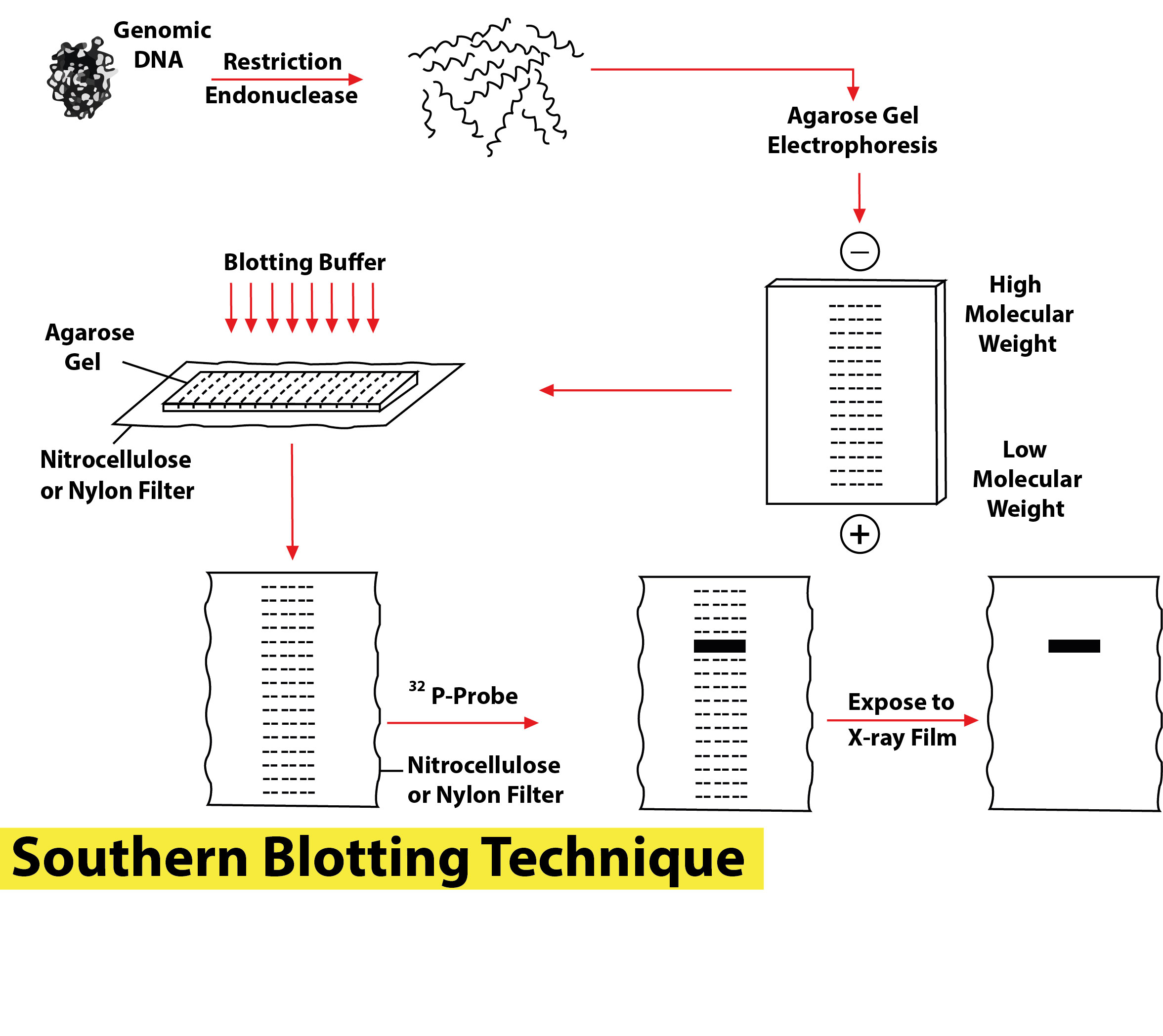
Southern blotting Technique uses -----paper for embedding DNA strands.
(a)Whatman’s No:1
(b)Parchment
(c)Nitrocellulose
(d)Cellophane
Answer
493.2k+ views
Hint: This is a mild explosive, used in rockets, propellants, printing ink bases, leather finishing, and celluloid. This is also known as Guncotton. This is a compound produced by the reaction of cellulose and nitric acid, or other strong nitrating agents.
Complete answer:
Southern blotting is used to detect specific DNA sequences from the given sample of DNA.
-The first step in a Southern blot is to prepare the DNA mixture by breaking them into small fragments of separate DNA’s using a restriction enzyme.
-The mixture of DNA fragments is separated according to the size by gel electrophoresis.
-Then, the double-stranded pieces of DNA are denatured into single strands by the use of gel.
-Next, the DNA is transferred from the gel into a blotting membrane which is known as the nitrocellulose membrane.
-The DNA is labeled using radioactive probes which can be then detected by autoradiography.
Additional Information: The advantage of Southern blotting offers genetic testing is that it can be used to detect DNA identity, size, and abundance. If a scientist wants to look at whether an organism has a particular gene mutation, southern blotting can be used to identify the presence of that mutated gene.
Procedure/ Steps:
-Restriction digest: done by using RE enzyme and amplification by PCR
-Gel electrophoresis: through SDS gel electrophoresis
-Denaturation: It is done by treating with HCl and NaOH
-Blotting-Nitrocellulose
-Baking and Blocking by using casein in BSA
-Hybridization done with the help of labeled probes
-Visualization by the use of an autoradiogram.
So, the correct answer is, ‘Nitrocellulose.’
Note: DNA fragments from a gel are transferred to a nitrocellulose paper during the process, Southern blotting. The main aim of transferring the DNA from a gel to a nitrocellulose paper is to:
- To attach the DNA fragments to a substrate permanently.
- Separate the 2 complementary DNA strands.

Complete answer:
Southern blotting is used to detect specific DNA sequences from the given sample of DNA.
-The first step in a Southern blot is to prepare the DNA mixture by breaking them into small fragments of separate DNA’s using a restriction enzyme.
-The mixture of DNA fragments is separated according to the size by gel electrophoresis.
-Then, the double-stranded pieces of DNA are denatured into single strands by the use of gel.
-Next, the DNA is transferred from the gel into a blotting membrane which is known as the nitrocellulose membrane.
-The DNA is labeled using radioactive probes which can be then detected by autoradiography.
Additional Information: The advantage of Southern blotting offers genetic testing is that it can be used to detect DNA identity, size, and abundance. If a scientist wants to look at whether an organism has a particular gene mutation, southern blotting can be used to identify the presence of that mutated gene.
Procedure/ Steps:
-Restriction digest: done by using RE enzyme and amplification by PCR
-Gel electrophoresis: through SDS gel electrophoresis
-Denaturation: It is done by treating with HCl and NaOH
-Blotting-Nitrocellulose
-Baking and Blocking by using casein in BSA
-Hybridization done with the help of labeled probes
-Visualization by the use of an autoradiogram.
So, the correct answer is, ‘Nitrocellulose.’
Note: DNA fragments from a gel are transferred to a nitrocellulose paper during the process, Southern blotting. The main aim of transferring the DNA from a gel to a nitrocellulose paper is to:
- To attach the DNA fragments to a substrate permanently.
- Separate the 2 complementary DNA strands.

Latest Vedantu courses for you
Grade 9 | CBSE | SCHOOL | English
Vedantu 9 CBSE Pro Course - (2025-26)
School Full course for CBSE students
₹37,300 per year
Recently Updated Pages
Master Class 9 General Knowledge: Engaging Questions & Answers for Success

Master Class 9 English: Engaging Questions & Answers for Success

Master Class 9 Science: Engaging Questions & Answers for Success

Master Class 9 Social Science: Engaging Questions & Answers for Success

Master Class 9 Maths: Engaging Questions & Answers for Success

Class 9 Question and Answer - Your Ultimate Solutions Guide

Trending doubts
Give 10 examples of unisexual and bisexual flowers

Draw a labelled sketch of the human eye class 12 physics CBSE

Differentiate between homogeneous and heterogeneous class 12 chemistry CBSE

Differentiate between insitu conservation and exsitu class 12 biology CBSE

What are the major means of transport Explain each class 12 social science CBSE

Draw a diagram of a flower and name the parts class 12 biology ICSE




